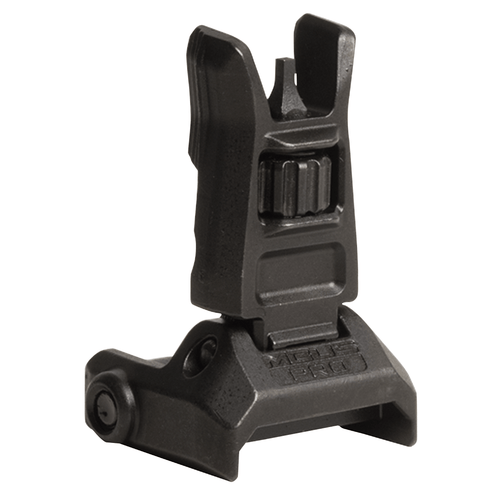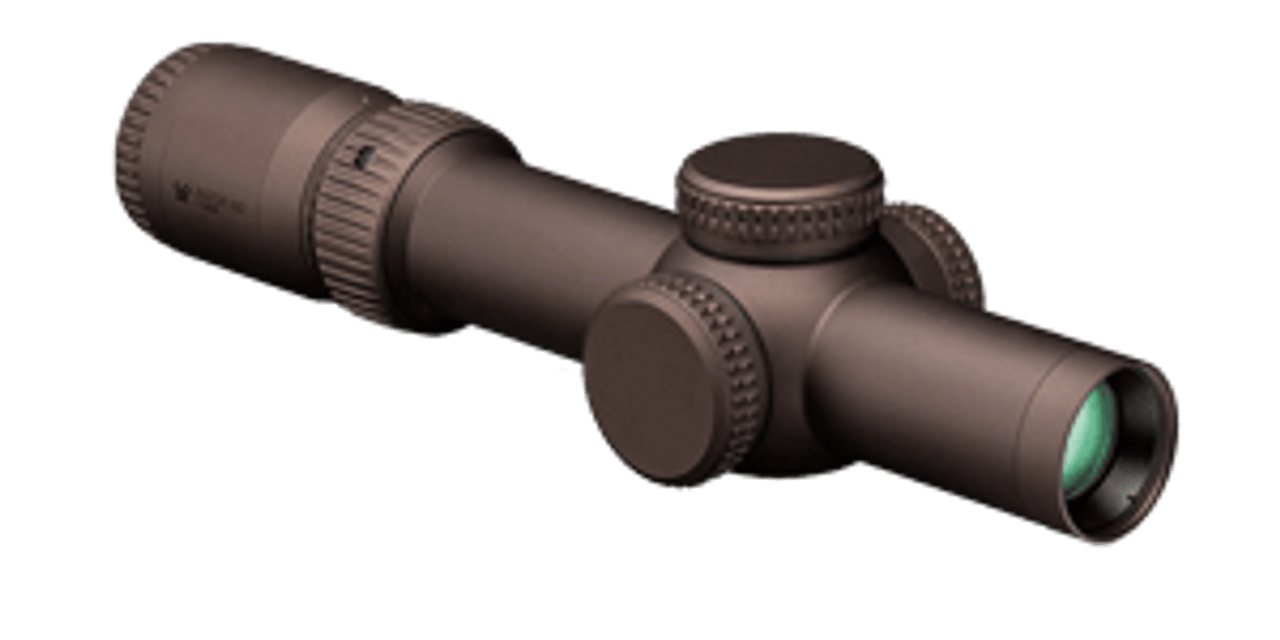-

Trijicon
Trijicon 100156 ACOG 3.5x 35mm Obj 28.9 ft @ 100 yds FOV Black Matte Dual Illuminated Horseshoe 223 Ballistic Green
Was: $1,207.99Now: $1,179.99 -

-

-

STEINER
Steiner 8723 M8Xi Black 1-8x24mm 34mm Tube G2B Mil-Dot Reticle
Was: $3,716.99Now: $2,599.99 -

Trijicon
Trijicon 1600002 VCOG 1-6x 24mm Obj 95-15.9 ft @ 100 yds FOV Black Finish Horseshoe Dot/Crosshair 223 55 Grain Ballistic Red
Was: $2,085.99Now: $2,000.00 -

Trijicon
Trijicon 100002 ACOG Black Hardcoat Anodized 6x 48mm Illuminated Red Chevron .308/7.62 Reticle
Was: $2,256.99Now: $2,179.99 -

-

-

-

-

LEUPOLD
Leupold 177156 DeltaPoint Pro with AR Mount 1x 2.5 MOA Red Dot Black
Was: $599.99Now: $499.99 -


Optics
DEGuns carries everything you need to equip your favorite gun with high-powered optics that look great and perform even better. Whether you’re looking for a new long-range hunting scope or a red dot sight for better short-to-mid-range accuracy, our selection of top products from Swampfox Optics, Leupold Optics, Nightforce Optics, and many more. Our selection rivals other top sellers like Optics Planet and Vortex Optics.
Types of Optics: Rifle Scopes
Selecting the right rifle scope is an intensely personal choice. There are a lot of little details that have to be considered when choosing a scope. Most are in the market for a scope that will improve accuracy when hunting, where you have to hit a small target from a long-distance. Here are a few things you’ll want to think of when shopping for rifle scopes.
Every hunting situation is different depending on the location you’re at and the game you’re hunting. Alternatively, range shooters are looking for a different set of features and benefits entirely. Unfortunately, there are no one-scope-fits-all use cases. Obviously, the first thing you want to consider is the magnification factor of your scope. The higher the magnification number, the better you can see into the distance. Some scopes offer variable zoom features that allow you to view different magnification factors rather than needing different rifle scopes.
The size of the lens is also an important detail to consider as you shop for rifle scopes. A larger lens collects more light and gives you a wider field of view at range, while a smaller lens lets less light in, therefore offering less detail to the shooter. Field of view is an incredibly important metric for hunters as you may need to track the game at long distances without having to back out and adjust your optics. That’s a period of time when you can easily lose sight of your target. Eye relief must also be taken into account to get the most accuracy out of your rifle scopes. Eye relief is the space between the scope and your eye, and different optics have different ranges of eye relief that you need to consider. Take some time to determine an eye relief that’s comfortable for you, then browse rifle scopes that offer eye relief in that range. In turn, your shots will be more consistent and more accurate.
Other Factors to Consider When Shopping for Optics
How you will be using your rifle scopes and other optics can also help drive important decisions. In addition to looking at features such as magnification, variable zoom capabilities, down-sight field of view, and lens size, you also want to look at what the scopes are specifically designed for.
Durability is one of several other factors to consider when shopping for optics. Scopes should be made from high quality materials in addition to featuring additional protective components. These could come in the form of rubber protection around sensitive impact areas and lens caps to protect glassware from scratches and dirt while not in use. Weather resistance is something hunters should always be thinking about when looking for new rifle scopes. The environments hunters expose their equipment to are significantly more rigorous than the conditions, say, a competition range shooter would put their rifles and rifle scopes through. Hiking into hunting spots with a rifle sling can expose your optics to all manner of shakes, bumps, and scrapes as they traverse through dense foliage.
Some other nice-to-haves in the optics department are clear optics down-sight and the ability to make adjustments for current wind and elevation conditions. Rifle optics have come a considerable way since their inception.
Brief History of Rifle Optics
Believe it or not, the work on rifle optics began before the existence of modern rifles, about 300 years ago. The technology involved with rifle scopes is actually derived from telescopes. Once they found a way to attach small-scale telescopes to rifled barrels, it was quickly realized that it greatly improved their accuracy. Prior to the rifling of barrels, it didn’t matter much how lined up you were with your target due to the overall inaccuracy of the projectiles.
The first practical optics came around in the mid-1800s. These were, of course, very basic by today’s standards, but they were both sturdy and stable enough to provide marked improvements in rifle accuracy. During both World Wars, competing powers were constantly looking for any edge they could get. During the early-to-mid 1900s, there were multiple big advancements in rifle scopes. One advancement was the inclusion of refractor scopes, which allow light to travel directly to the shooter, improving visibility down-sight, especially in low-light conditions. This type of sighting was available in the previous century, but it wasn’t durable enough to be effective in combat situations. In World War One, the Germans started with an early lead when it came to rifle scopes, giving their snipers a massive advantage when shooting across no man’s land between trenches. Over time, the U.S. played catch up, creating two popular options, the Lyman Alaskan (2.5x magnification with extensive field of view) and, eventually, the Unertl 10x magnification scope.
During the Vietnam War, a scout sniper named Carlos Hathcock managed to attach a basic telescopic scope onto an M2 .50 caliber machine gun. Turning it to single fire mode, the M2 with the makeshift scope delivered range and power that had not previously been seen. During the war, he got a confirmed kill of 2,500 yards, which remained the longest confirmed kill for three decades and remains in the top 10 worldwide and 2nd in the U.S. Military. This eventually paved the way for the development and advancement of high-caliber rifles and, more importantly, rifle scopes, which were then slowly modified and released for civilian use.
Types of Optics: Red Dot Sight & Other Optics
Red Dot sights, such as Vortex red dot sights, are designed to enhance the targeting accuracy of aiming down your sights. They don’t, however, add magnification capabilities. A red dot sight works by placing a red dot provided by an LED light across curved lenses with a coating. The overall effect of this is that as you look through the sight, the red dot appears to be placed directly where the round will hit.
Of course, this is different from a laser sight, which paints where you’re aiming with a laser pointer dot. In a red dot sight, only the shooter can see where the dot is placed. Another cool benefit of red dot sights is a reduced parallax effect, meaning you can be more accurate even when not looking at the sight in perfect alignment.
Night Vision Goggles & Night Vision Scope Options
The very first iterations of night vision scope options came about in WWII; however, despite offering a supreme tactical advantage, they came too late in the war to make a difference in the outcome. Today, hunters can equip their rifles with a thermal and night vision scope complete with all the bells and whistles you expect from ultra-premium scopes, including custom reticles.
In addition to scopes with very low-light optic capabilities, DEGuns offers scopes with thermal capabilities, night vision goggles, and high-powered thermal spotting scopes.
Popular Optics Brands
Those looking for top-performing optics brands at DEGuns are in luck. We stock many of the scope and red dot sight options from the most popular brands.
Vortex Optics prides itself on its customers and has a generous lifetime guarantee on many items. Their commitment to people and product quality made them secure several major contracts, including the U.S. military. Vortex Optics produces a variety of optics options, including a line of Vortex red dot sights, monoculars, binoculars, spotting scopes, and rifle scopes.
Swampfox Optics is named after Francis Marion. He was once a farmer but later served with the British army in the French and Indian War. During that time, he learned the value of recreating like a warrior, which, in his case, was the advantage that concealed long guns had over short-range muskets. Today, Swampfox Optics carries that mindset into its business model, creating high-quality optics at competitive prices.
Leupold Optics is a family company with roots going back to 1907. The original company, Leupold and Stevens Instruments focused on manufacturing a variety of technologies, such as water-level recorders. However, everything changed on a hunting trip in the 1940s when Marcus Leupold missed a shot due to a fogged-up scope. In 1947, they introduced the first fogproof scope built by Americans. It also paved the way for nitrogen-flushed scope interiors, which don’t react to temperature changes. Today, Leupold produces high-quality riflescopes, red dot sights, spotting scopes, rangefinders, and more.
Nightforce Optics produces high-end telescopic sights, riflescopes, and spotting scopes. They were founded in 1992 by Ray Dennis, who arrived from Australia to the US. He formerly owned a company that manufactured flashlights.
